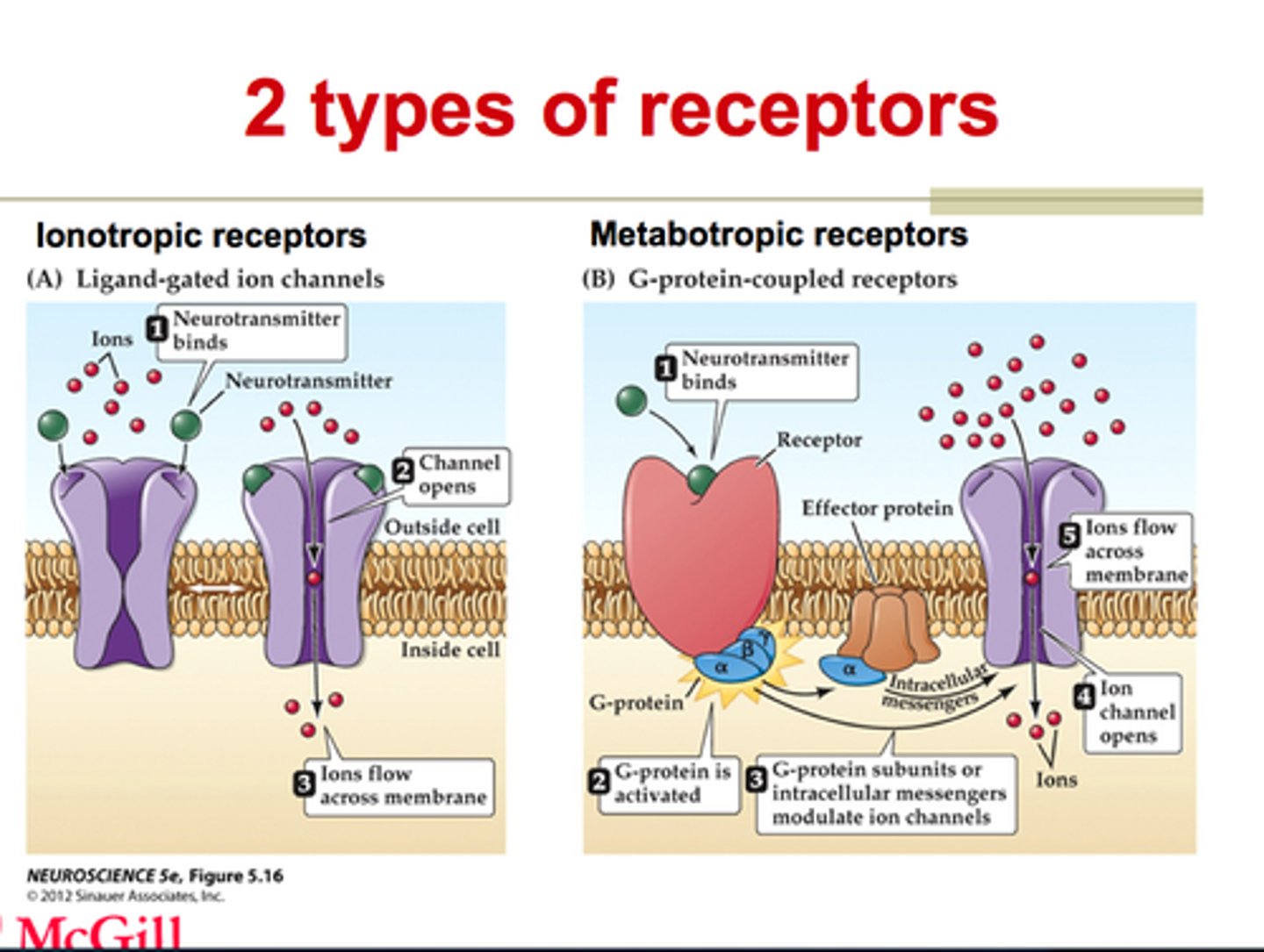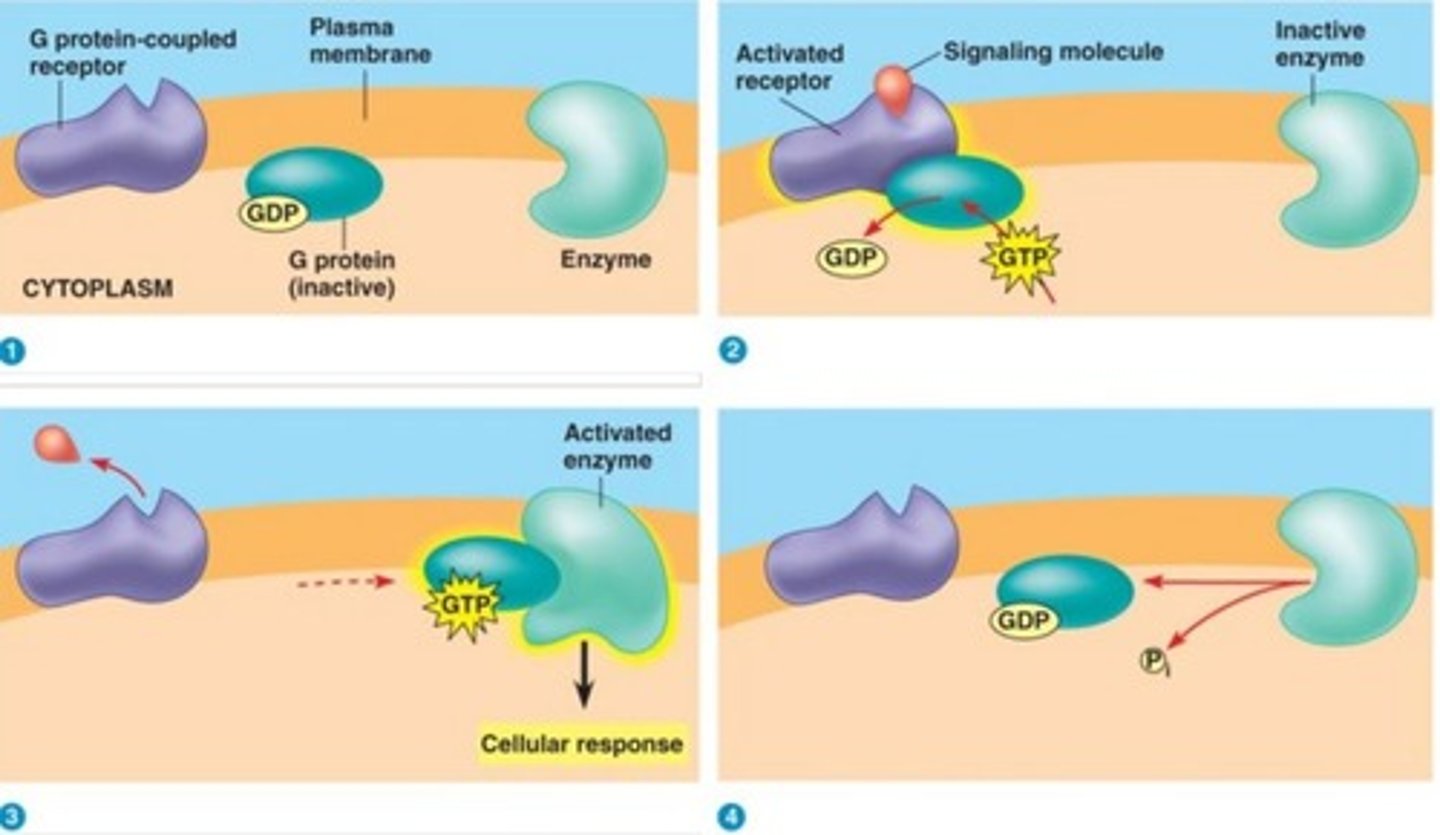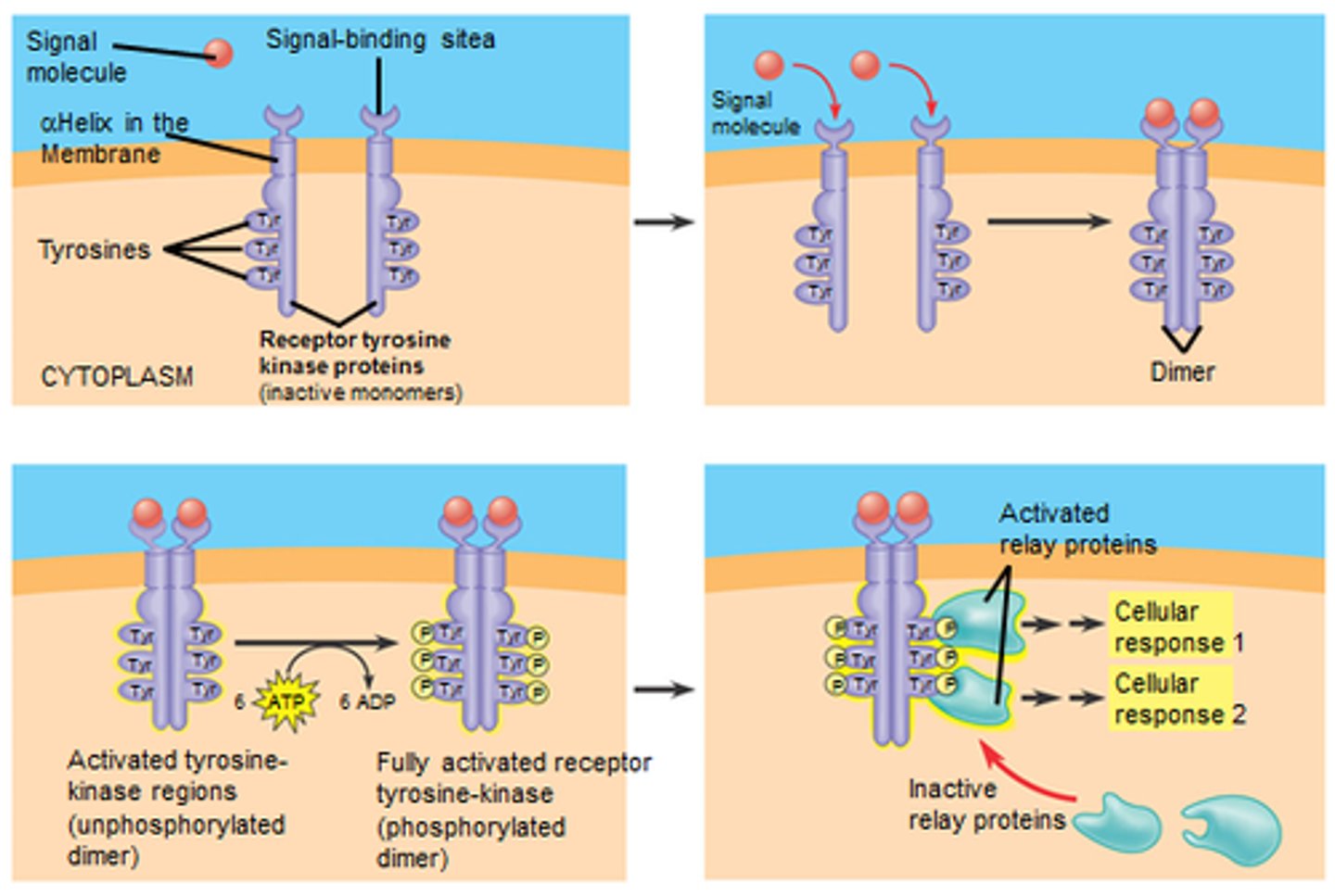C2.1: Chemical Signaling
1/43
There's no tags or description
Looks like no tags are added yet.
Name | Mastery | Learn | Test | Matching | Spaced |
|---|
No study sessions yet.
44 Terms
Ligands
A molecule that binds specifically to a receptor site of another molecule (chemical signals)
Ligand-Binding Site
the specific location on the receptor protein where a signaling molecule binds
Target Cells
cells that have receptors for a particular hormone/ligand
Ligand/Enzyme Similarities (3)
-Substrate/ligand must bind at a specific site (ligand binding site for ligands, active site for enzymes)
-physical and chemical properties of ligand and binding site of receptors are complimentary (same w/ enzyme and active site)
-receptors remain unchanged by binding (besides induced fit), receptor/active site revert back to original shape once ligand/enzyme leaves
Ligand/Enzyme Differences (2)
-Substrate becomes product and releases, ligand stays the same
-substrate stays bound for short period of time, ligand stays bound for longer
Quorum
Set number of individuals needed for a group activity to begin
Quorum Sensing
Once set number of individuals met, certain activity or behavior occurs
-all cells of species secrete ligand in small amounts, as population of species increases, amount ligand increases
-once enough receptors are bound to ligands, gene expression changes
Vibrio fischeri
marine bacteria that resides in light organ of bobtail squid
-all bacteria cells produce autoinducer which binds to LuxR, receptor in cytoplasm of bacteria
-once bound, results in LuxR-autoinducer complex that binds to DNA and begins transcription of genes
-producer luciferase, catalytic enzyme that loses energy in the form of greenish-blue light
-light helps squid camouflage in moonlight
Requirement of Signaling Molecules
must have unique shape and chemical property to be distinguished by receptors, and be small/soluble enough for transportation
Diversity of Hormones
-can have amines (contains NH2) like epinephrine/melatonin
-can be peptides like insulin and glucagon
-can be steroids (nonpolar) like oestradiol, progesterone, testosterone
Diversity of Neurotransmitters
-amines (dopamine)
-gases (nitrous oxide)
-amino acids (glutamate, glycine)
-esters (acetylcholine)
Examples of Signaling Chemicals (4)
Hormones, Neurotransmitters, Cytokines, and Calcium Ions
Hormones
Produced by glands and transported via bloodstream
-blood transports hormones to all parts of body, only recognized by target cells that have proper receptors
-can start/inhibit certain processes and persist for hours
-ex. insulin, thyroxin, testosterone
Types of Glands
Endocrine and Exocrine
Endocrine Glands
Secrete internally w/out ducts, ex. pituitary gland, testes/ovaries
Exocrine Glands
Secrete out of organ w/ ducts, ex. pancreas/skin
Neurotransmitters
Produced by neurons and transported across synapses, binds to receptors in postsynaptic neuron, begins action potential (can be excitatory or inhibitory)
-persist for fraction of a second, quickly degraded or reabsorbed into presynaptic neuron
ex. acetylcholine, dopamine
Cytokines
Produced by almost all body cells, small proteins that control growth/activity of immune system and blood cells
Coordinates immune response by activating T-cells and macrophages, also regulates inflammation
ex. erythropoietin, interferon, interleukin
Inflammation
Body's initial response to injury, characterized by redness, swelling, and heat
Calcium Ions (Ca2+)
Used for signaling in neurons and muscle fibres, stored in sarcoplasmic reticulum of muscles
-binds to troponin, which blocks muscles contraction
-also arriving AP opens Ca2+ channels in neurons, allowing Ca2+ to diffuse into neuron and signaling vesicles w/ neurotransmitters to exocytose into synapse
Effective Distance of Signaling Molecules
Neurotransmitters/cytokines are local regulators
Hormones travel from secreting cells to target cells located all over body via bloodstream (far)
-ex. pituitary gland secretes luteinizing hormone (LH) to be recognized by testes/ovaries
Local Regulators
Signals that work only over short distances via diffusion
Types of Ligands
Ligands characterized by whether they can enter the cell or not
Hydrophilic or Hydrophobic
Hydrophilic Ligands
Cannot enter cell, transmembrane receptors in plasma membrane receive them w/ binding site facing outside
-receptors have band of hydrophobic AAs that stay embedded in phospholipid tails
Hydrophobic/Lipophilic Ligands
Enter cell, bind to intracellular receptors in cytoplasm or nucleus
-intracellular receptors have hydrophilic AAs so they can stay dissolved
lipophilic ligands transports w/ protein "cover" so they can travel in hydrophilic environments
Initiation of signal transduction by receptors
depends on type of ligand and receptor
If ligand cannot pass membrane (protein)
-transmembrane receptor structure changes temporarily, becomes catalytic and activates enzymes and/or produces secondary messengers which carry signals to effector
If ligand can pass through membrane (steroid)
Forms a ligand-receptors complex, binds to DNA and regulates gene expression, promotes/inhibits transcription
Neurotransmitter Receptors
Transmembrane, ligand binds and opens membrane channels, ions (Na+, Cl-) move into neuron via facilitated diffusion, changing membrane potential
-fires an action potential in nerves or contraction in muscle fibres
ex. acetylcholine

G-Protein Coupled Receptors
GPCR, transmembrane receptors that uses a second G protein
G-Protein
composed of three subunits (alpha, beta, gamma), GDP (guanosine diphosphate) bound to alpha, keeps g-protein inactive
GPCR Process
Ligand binds to receptors, changes G-protein structure
-GDP detaches, allowing GTP to bind which activated g-protein
-alpha subunit dissociates from receptors, moves to effector, initiates response
-beta and gamma move to another effector

Epinephrine Receptors
Epinephrine (fight/flight) binds to GPCR, activating G-protein
-activates enzyme adenylyl cyclase
-adenylyl cyclase converts ATP into cyclic AMP (cAMP), a secondary messenger
-amplifies signal until large-scale process begins (phosphorylation cascade)
ex. liver cells release glucose into bloodstream after epinephrine binds
Kinase
enzyme responsible for phosphorylation, adds phosphate from ATP to specific molecules like tyrosine
Tyrosine Kinase Receptors
Insulin binds and activates receptors by changing its structure, two tails of receptors join to form a dimer
-each tail phosphorylates the other
-vesicles w/ glucose protein channels fuse w/ plasma membrane, embedding channels, increasing rate at which glucose enters cell

Intracellular Receptors
Steroid hormones are hydrophobic and can pass through cell membrane, binds to receptors in cytoplasm
-hormone-receptors complex enters nucleus, attaches to DNA and activates protein production via increase gene expression
ex. oestradiol, progesterone, testosterone
Oestradiol
regulates release of reproductive hormones
-activates hypothalamus to release gonadotropin-releasing hormone (GnRH)
-triggers anterior pituitary to release luteinizing hormone (LH) and follicle-stimulating hormone (FSH)
-during ovulation, transcription of GnRH increases
Full Oestradiol Process (simple)
oestradiol diffuses through plasma membrane, forms receptor-hormone complex, enters nucleus, acts as transcription factor
Hypothalamus
A neural structure lying below the thalamus; it directs several maintenance activities (eating, drinking, body temperature), helps govern the endocrine system via the pituitary gland, and is linked to emotion and reward.
GnRH
gonadotropin-releasing hormone, causes pituitary to release LH and FSH
Progesterone
Produced by ovary, responds by transcribing insulin-like growth factors, promoting cellular proliferation (division) for maintaining endometrium (uterine lining)
Types of Feedback
Positive or Negative
Positive Feedback
end produce amplifies product formation
ex. calcium-induced calcium release
-IP3 (inositol triphosphate) release Ca2+ from ER, Ca2+ activates IP3 receptors, which further increase Ca2+ release
Negative Feedback
End product inhibits product formation
ex. testosterone:
-GnRH targets anterior pituitary gland, releases LH, releases testosterone from testes
-increased testosterone signals anterior pituitary to decrease LH, which then signals hypothalamus to decrease GnRH